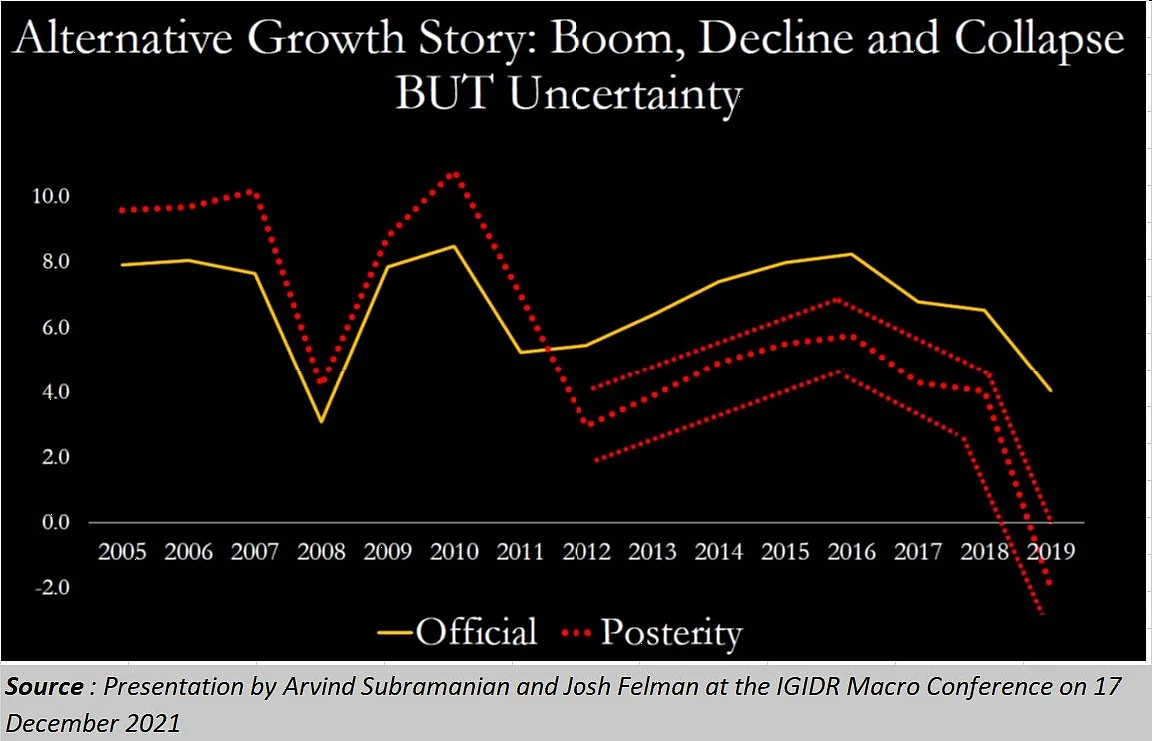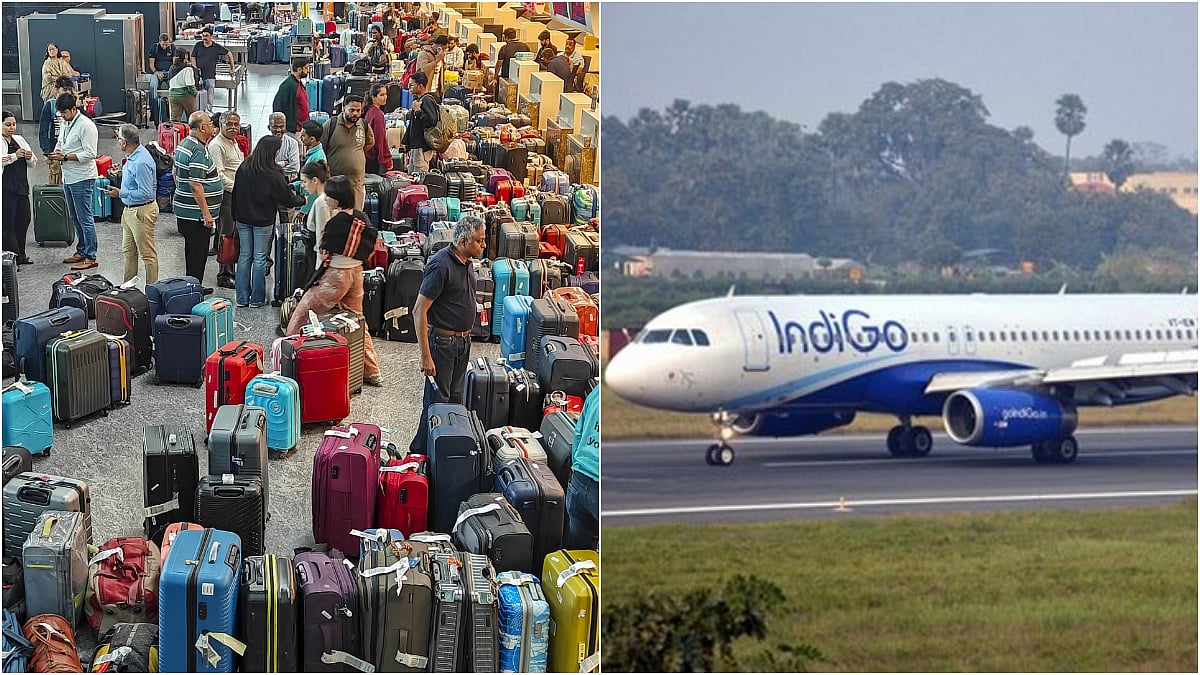Ah! the clock is always slow.
It is later than you think
There was a time when most people had the confidence that the economy would be pulled up by its planners. There as a time when atma nirbhar Bharat made sense. Not anymore. Dear policymakers, wake up. It is much later than you think.
For those who would like to lull you into believing that everything’s all right, it is necessary to look at what noted economists Arvind Subramanian and Josh Felman have to say about India. The talk was made at the IGIDR (Indira Gandhi Institute of Developmental Research) in Mumbai on 17 December.
The two authors (like many astute analysts) have not been extremely comfortable with the (scant) official data put out by the government. So, they recomputed the numbers through a “posterity” curve. They plotted this by using the numbers given by the National Statistical Commission (NSC) panel, headed by Sudipto Mundle, during 2005-05 and 2010-11. They also considered other indicators like IIP (consumption), IIP (investments), tax revenues, exports, imports, and credit.

They show that growth slipped badly in respect of IIP (investments), imports, export, credit, tax revenues, and profits as a percentage of GDP.
These columns have dealt with many of these issues earlier. They have pointed to dangers in each of these segments. But the composite picture painted by these economists should make anyone sit up with shock and alarm.
For instance, we have drawn attention to IIP figures.
We have also pointed out how exports are slipping badly, especially during the last seven years. In the same article we also talked about the unemployment crisis that was looming large. Unemployment has become worse, as CMIE points out. India has seen a loss of 10.5 million jobs, when it should actually be creating at least 13 million jobs incrementally year after year to keep pace with a growing population. Unemployment has been over 7% during the past three months, and rose to 7.9 per cent in December 2021.

Similarly, we have provided data which point to a definite deceleration in corporate profitability.
In another article we pointed out how tax revenues are not really buoyant, but that GST collections have gone up because more cash was injected into the markets. Even while the government kept pointing to the increase in GST collections as indicative of an economic rebound, it was obvious that almost Rs.3 lakh crore of GST remained uncollected.

If tax collections have increased, it is primarily because the rates of taxation have increased, and more items are being brought under high taxation (e.g., petrol and diesel cesses). They do not indicate a robust economy.
The two economists believe that even though there is uncertainty about the numbers, the trends indicate an even more painful time ahead.
It must also be stated that not everyone agrees with the estimates put forward by Subramanian and Felman. But there is no denying that the country is going through a very painful phase of painful unemployment and low economic growth. The situation is grim, and could lead to very unpleasant consequences.
Immediate measures
There are two ways of looking for solutions. One is the immediate need for jobs and sustainability. For many, it is a matter of survival; of taking care of the family and self. The other is longer-term.
In the short term, the primary problem is government policies. They have prevented farmers from taking charge of their own destinies through well managed cooperatives and FPOs or farmer producer organisations.
Immediately withdraw all restrictions on inflow of funds for industrial or commercial projects, including those from China. The ban was absurd. You never say no to money. Even the US despite its high-decibel propaganda against China has not stopped the flow of investments from China. Why should India be more prudish about this? China is the world’s largest source of capital. No country has said no to China’s funds. This is money coming into India, not being taken out. Why the hypersensitivity? Sounds illogical and unwise.
Similarly, do not ban NGOs from receiving funds. Whatever the reasons, this is not the time to ban them. First, there is money coming into India at a time when the country needs it. Second, many NGOs create employment opportunities. Banning them during an economic downturn is most unwise.
Begin sharing information with people. Make Lok Sabha and Rajya Sabha replies easily accessible. Ditto with ministry reports – irrespective of whether they relate to finance, agriculture, human resources, law & order or census. There is no disinfectant better than sunlight. Information has the unusual effect of releasing solutions – almost as if through crowd sourcing. That helps societies and planners discover new ways to make things happen. Please do so immediately.
The government must step away from commodity markets and stop banning trade in any commodity under the specious charge that they have caused consumer prices to go up. Markets will self-correct. But destroying commodity markets makes life for farmers even more precarious. Stop crippling farmers through subsidies especially in sectors which have learnt to be profitable without government help. This way, the government actually harms the efficient, and rewards the inefficient.
Stop resorting to agri-imports. If imports become necessary, do so through a good FPO. And till such a time that that good FPOs emerge, use the skills and services of NDDB, an old and established player in this sector. Imports and cosy relationships with importers and exporting countries are what has destroyed the edible oil industry.
All these steps are important because the rural sector accounts for 50% of India’s population. If fortunes in this sector improve, the economy creates the purchasing power to drive industry across the country.
For urban and rural areas, focus more and more on roof-top solar. They have the potential of creating substantial numbers of jobs and also decentralising the industry. If Germany could realise in 2008 that the rooftop solar had become a very big employment opportunity, why has India not learnt from this? India has more sunlight, more people, hence more houses, and therefore more rooftops. Use the rooftop solar route.
Or, better still, follow the route that is being pursued by Tata Power in creasing community owned solar generating stations for each village, and link it to employment generation. Tata Power has done this for around 200 villages, ad will soon cover 1,000 villages, making it the world’s largest environmentally sustainable project.
Begin work on health and education sectors, though the effects will be felt in the medium term (see below).
If the government wants to keep the anti-cow-slaughter bills in place, do so. But pay farmers Rs.20,000 for each old cattle that he has not been allowed to sell. That will allow him to purchase fresh cattle. In turn, that will allow him to increase his sources of income and not bear the expenses of maintaining old cattle.
Encourage farmers to have and rear more buffaloes. If they want to sell buffaloes to Bangladesh or elsewhere, let them. Teaching the border patrols to look after cattle is a misuse of resources, and diverts security agencies from their primary task of securing our borders. If Indians can earn money through sale of buffaloes, why not permit them. We allow marine exports. Why not cattle exports, especially to Bangladesh and countries neighbouring the Northeast? The farmers will be happy. And the rural scene will become more peaceful.
Medium and long term
In the medium term, focus on making companies more export oriented. Begin with textiles and garments because that is where India’s core interests lie.
Begin work on education and health care on a war footing right away. It will take at least 8-10 years before the improved educational standards will begin to create a nimbler workforce for future jobs. Without literacy, you cannot expect a new generation to cope with new jobs. Moreover, you can never aspire to have a vibrant India without quality education and good healthcare. Use the central government’s financial levers of grants and tax exemptions to push in a regime that measures outcomes in schools. Unless that is done, India’s future growth will be extremely limited.
In the long term, arm companies to prepare for the future. This can be best achieved by making doing business in India a lot easier than has been the case in recent years.
It may also be necessary to re-orient India’s trade policies, as stated by both Arvind Panagariya and Arvind Subramanian.
Given the innate entrepreneurial spirit that India’s business communities have, there is reason to believe that the country can survive, even thrive. But will India’s policy makers allow it to? Or will the hordes of surging unemployed be used to wreck every institution? Will the surging numbers of desperate illiterate youth be suckered into rent-a-mob activities? Such possibilities are terribly scary.
The author is consulting editor with FPJ









